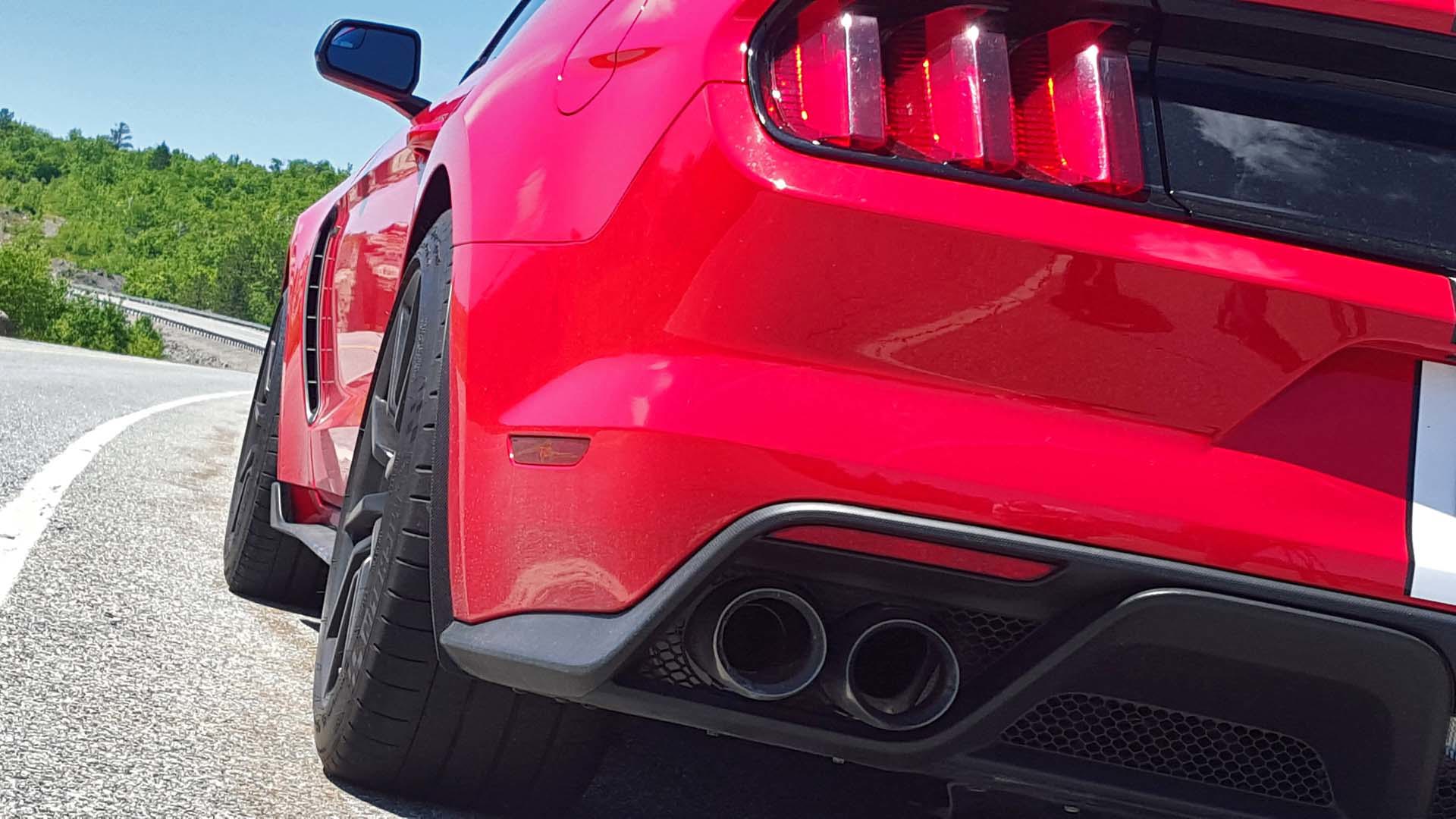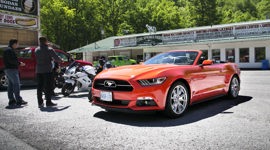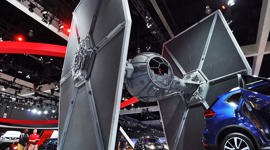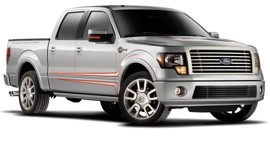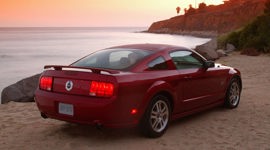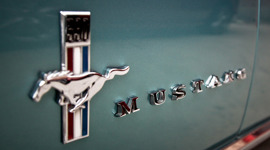Have you heard? The 2016 Ford Mustang Shelby GT350 is just the craziest.
It’s set lap records. It has carbon fibre. Its shocks are made of magnets and witchcraft. It has brake rotors the size of trash-can lids, tires stickier than warmed toffee, and a grille designed to suck up great big chunks of the atmosphere and turn them into downforce and cooling and horsepower and manliness. The GT350 causes coarse chest hair to explode vigorously from anyone who looks at it.
Importantly, the new Shelby GT350 packs a look that fully backs up its capability, and a sound that fully backs up its look.
The GT350 is daunting. Menacing. Commanding of respect. It looks dire, angry and serious. You can, literally, hear it a mile away on a quiet day. And if you’re a car-guy or car-gal lucky enough to be drenched by the exotic, thudding exhaust note of a nearby GT350 under hard throttle, you’ll agree that the car sounds exactly like it looks like it sounds.
(I spent a week driving the GT350. It didn’t suck. Here’s a video review, which includes lots of noises you should probably hear.)
I spoke to Tom Teknos, an NVH technical specialist at Ford Performance in Allen Park, Michigan, about designing and creating the signature soundtrack for the GT350, and where the inspiration for its sound came from.

JP: How important is the exhaust noise of a car like the GT350? Do owners demand a car that sounds like an automatic weapon being fired at a fireworks display during an earthquake?
TT: The sound of powertrain during acceleration is a fundamental quality that our customers demand. It’s one of the key attributes that separates a high-performance car like a GT350 from a more mainstream vehicle. The sound is inherent to the engine, but is enhanced through proper engineering. Which is to say, we carefully designed and tuned the manifolds, exhaust system, and even air induction system like a musical instrument.
JP: Did Ford engineers drive the Camaro or Challenger and think, “Pfft, yeah, we could definitely out-do that noise”?
TT: GT350 was designed to look and sound aggressive and menacing, and the voice of the car needed to match the look. And, I think we overachieved on both. We did benchmark the Camaro and Challenger, but neither vehicle has a flat-plane V8. So, they were not too relevant. Our primary benchmarking was actually on the Ferrari 458 Italia, which does have a flat-plane V8 and an amazing sound signature. Our intent was to craft the GT350 sound with a mix of flat-plane wail, with an added American flavor.
JP: Ferraris are bad-ass! Do you guys like Jurassic Park, too? Was one of the Tyrannosauruses any inspiration for the Shelby’s kickass growl?
TT: T-Rex never came to mind, but we have heard the car compared to a pack of angry killer bees!

JP: Is there a regulatory sound limit on how loud a street car exhaust can be? Does it vary between countries? Was much bribing required to be able to exceed that limit with the GT350? With the exhaust in ‘sport’ mode, it can’t be street legal?!
TT: No bribes! There are legal noise requirements which are regional. The GT350 meets all legal noise requirements.
JP: How can the exhaust noise be manipulated? Is it just the style of muffler? The intake system? The exhaust manifold? What, physically, gives the GT350 its signature noise?
TT: The signature sound is a result of even (bank-to-bank) firing from the Flat Plane Crank (FPC). By even, I mean that the firing order is L-R-L-R-L-R-L-R. Each exhaust pulse being separated by 90 crank angle degrees. So, each bank has pulses at an interval of 180 degrees. This allows for exhaust gas scavenging for improved power. And a smooth and linear exhaust note. If the manifold was configured with equal length runners, the sound would be very smooth (like a Ferrari). We introduced some un-equal runner lengths, to create some roughness. The car needed to sound more American and less Italian. The manifold design is the key to this.
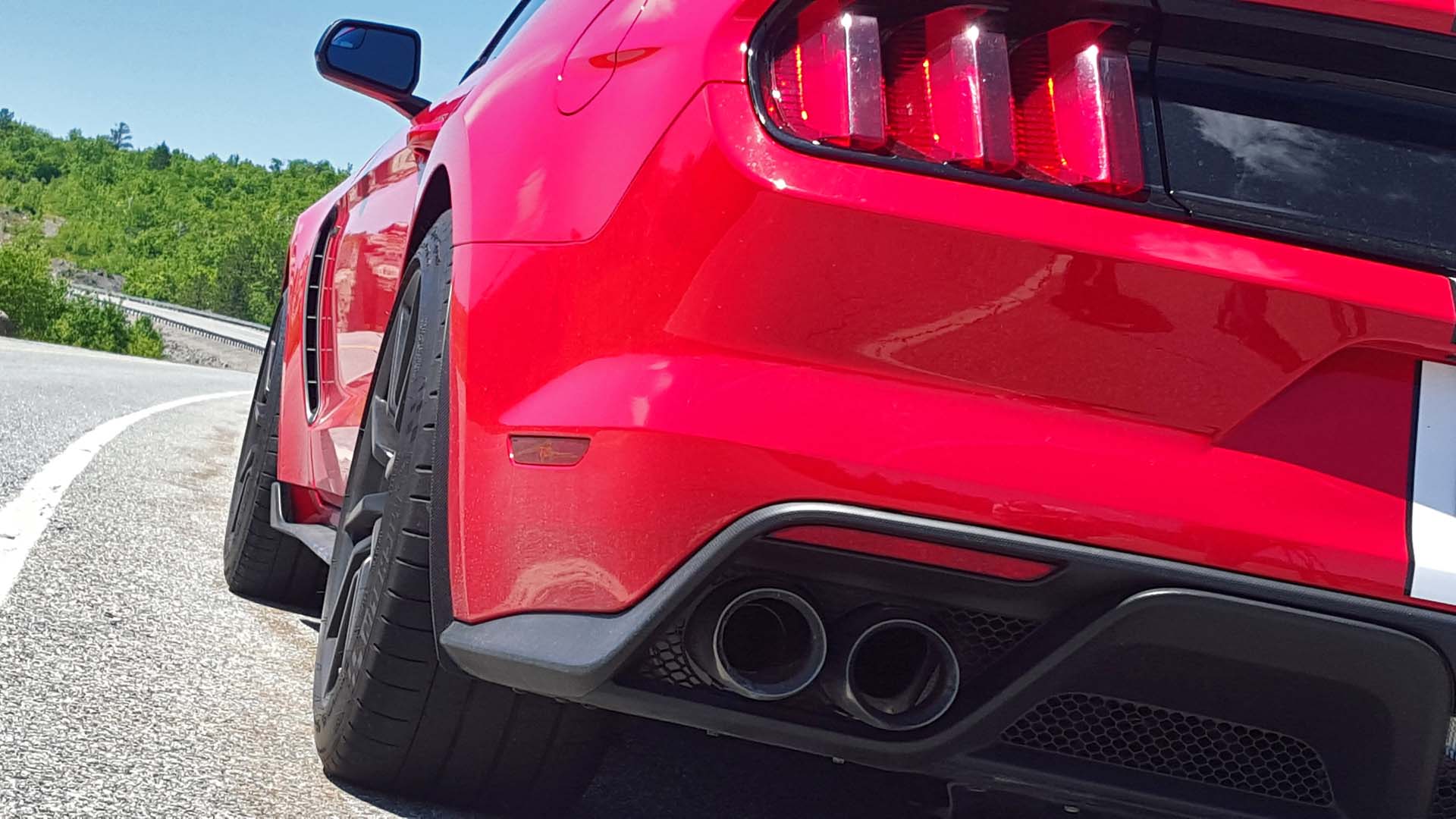
JP: How do the flat-plane crank, firing order, and monster 8,200 RPM redline tie in to the latest Shelby’s sound signature?
TT: The FPC produces some of the sweetest engine tones imaginable. This is due to the even firing order, which allows 180 degree separating between engine firing events. This spacing gives the exhaust note the “wail” as opposed to a “rumble” that you get from a traditional cross-plane V8. And the high redline allows us to stretch the music out to a powerful crescendo.
JP: What causes that delightful snap-crackle-pop sound from the tailpipes when you lift the throttle at higher revs?
TT: That’s the result of excess fuel being burned in the exhaust, rather than in the combustion chamber, during throttle-off at high loads, like during shifts.
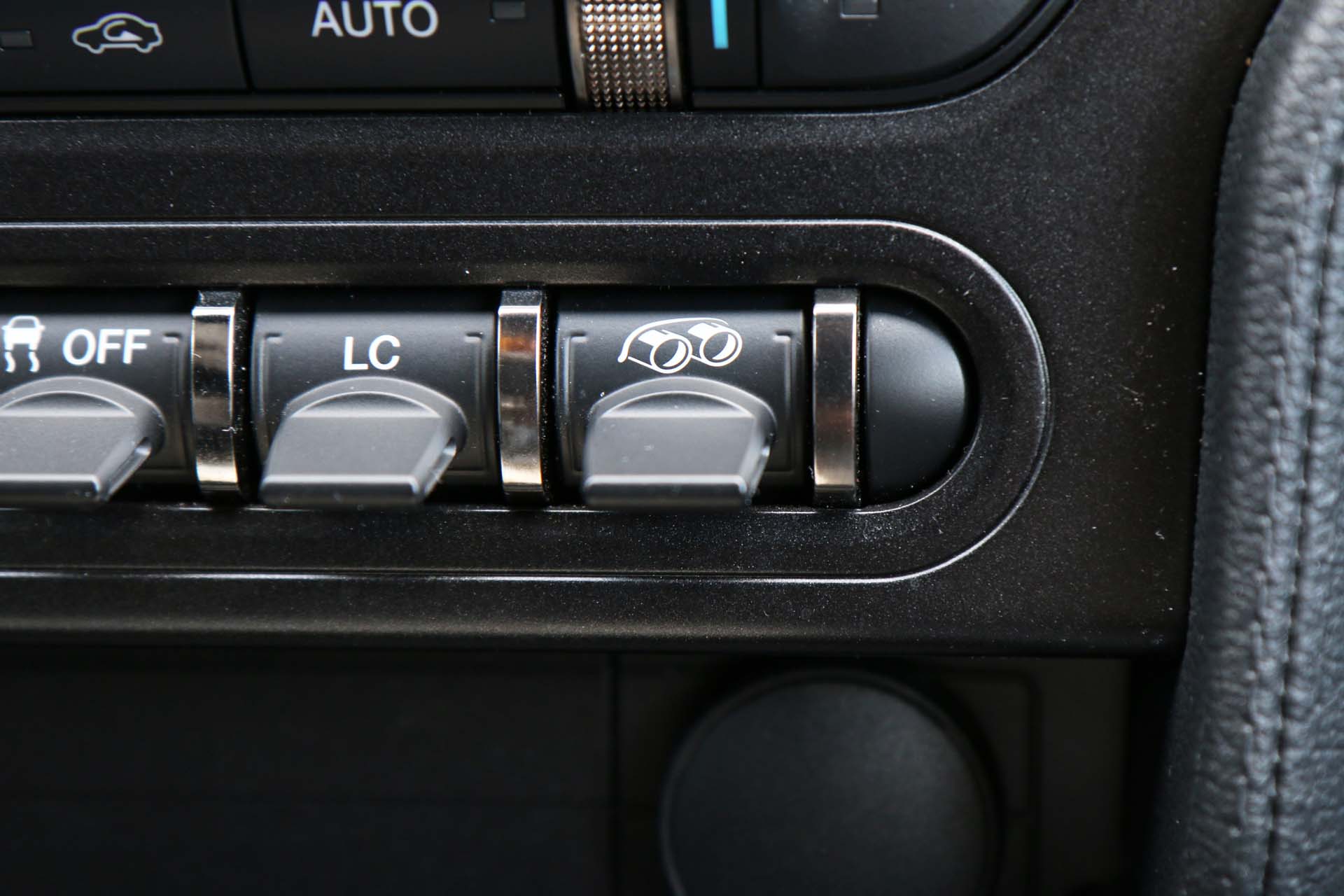
JP: What happens, physically, when the driver flicks the exhaust mode switch from NORMAL to SPORT mode?
TT: The muffler basically has a bypass which allows the exhaust gas to flow straight through it, without any noise suppression. When you hit the switch, an electric actuator opens a valve on the inboard tailpipe, which allows the gas to flow through the by-pass.
JP: An older lady smiled and said a bad word to me at the gas station when I started the Shelby the other day. How much control do engineers actually have over the way the car sounds? Is a target sound set and achieved, or is the sound just a by-product of other things happening in the engine and exhaust?
TT: The process of engineering the response “That sounds [expletive deleted] awesome!” is no accident. We first begin with measuring the sounds generated by cars in the same engine family (FPC V8), and then digitally alter these sounds to create our own unique signature, and finish by defining the plumbing required to make it happen. This definition of plumbing is mainly done with computer modeling. The result is the correct mix of manifold pipe lengths, crossover pipe design, muffler internals and tailpipe valve calibration. The final step is prototyping the hardware and fine-tuning.

JP: So how much fine-tuning is required? Are a lot of prototype parts (manifolds, mufflers, etc) tested to get the sound perfect?
TT: There is quite a bit of fine-tuning, but we do use computer simulation to get us close with our first cut of tuning parts.
JP: So, Ford pays you, with actual money, to drive and listen to prototype models, and fine-tune the exhaust sound of cars like the GT350?!
TT: It is a hard to believe, but I don’t just do this for fun. I actually get paid for this stuff. Some days it feels like stealing!!


